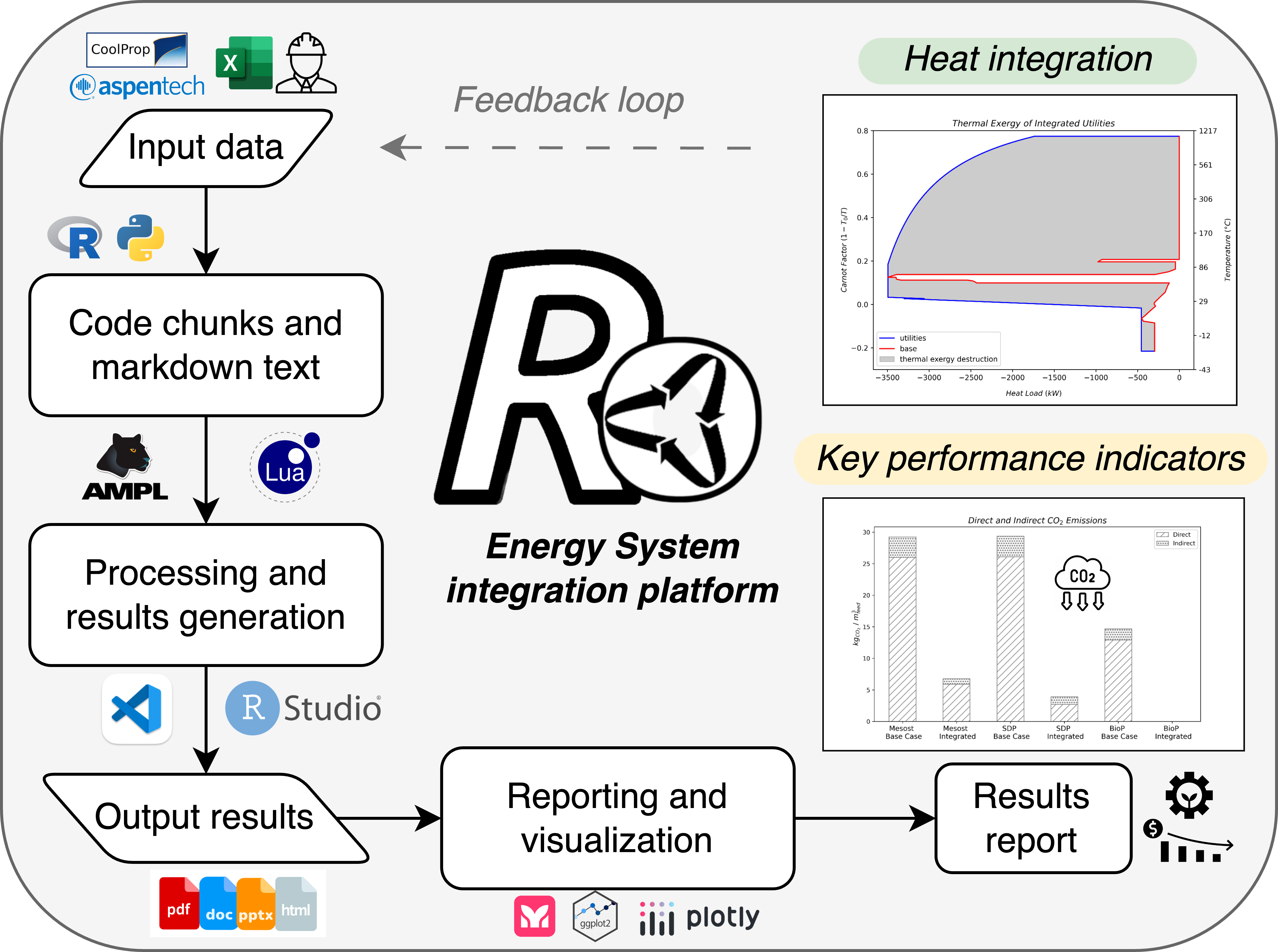ROSMOSE A web-based decision support tool for the design and optimization of industrial and urban energy systems
Highlights
This blog post highlights the recent journal publication in Energy discussing ROSMOSE a useful energy-systems decision support tool for engineers, researchers, and educators.
ROSMOSE is an opensource, web-based optimization tool for analyzing the energyefficiency of industrial and urban systems, and comparing process integration options. Used for teaching purposes and collaborative research projects with industrial partners, ROSMOSE makes professional process optimization and total site integration of industrial and urban systems accessible to engineers and researchers.
- ROSMOSE is an open-source energy integration, optimization and reporting tool.
- Pinch analysis and other assessments of decarbonization strategies can be performed.
- The process integration and waste valorization of a dairy plant is used as case study.
- Above 75 % energy saving is achieved by process integration and optimal utility selection.
- 96 % reduction in CO2 emissions and on-site biogenic energy sources are identified.
Key words: Pinch analysis, Multi-objective optimization, Process integration, Energy modeling, Open-source, Web-based tool, Dairy process, Energy efficiency, Environmental impacts.
Abstract

Energy efficiency is crucial for the sustainable operation of industrial and urban sectors. However, practicing engineers seldom have access to open-source tools that can readily evaluate and compare scenarios. In this work, a novel web-based tool called ROSMOSE is developed and proposed for analyzing the energy efficiency of industrial and urban systems and comparing potential process integration options. This optimization framework computes and graphically represents the minimum energy requirements, the pinch temperatures, and the Grand and integrated Carnot composite curves of process systems. Results are used to design utility systems that meet energy demands, while minimizing a specified objective function, such as total cost or environmental impacts. The Quarto environment, in which ROSMOSE is built upon, allows the integration of various open-source software and tools, such as database handling software, process modeling suites, and optimization solvers, along with interactive data visualization and reporting tools. This paper discusses the application of ROSMOSE for the energy integration and total site optimization of a dairy process consisting of milk treatment, and cream and cheese production to demonstrate the tool features. Other integration options, such as the use of heat pumps or solar panels, and the production of soft drinks or biogas as value-added byproducts, are also proposed and evaluated. As a result, from 75 % to 90 % in fuel savings and up to 80 % CO2 emissions reduction in the dairy plant are identified by optimizing the utility systems integration. Moreover, complete electrification via heat pumps eliminates any fossil fuel needs and it results in 85 % energy savings and up to 96 % CO2 emissions reduction. The activation of renewable electricity sources, such as solar power, made plausible this fully electrified scenario. Finally, optimized waste management strategies led to in-house fuel production and net export of biogas to the grid, but they also reduce cheese yield by prioritizing the biogas production from whey upgrading process. In this way, decision-makers have access to a clear performance comparison for a list of system configurations to draw informed trade-offs. A similar approach could be adopted to aid decision-making for the design and operation of other industrial and urban energy systems using ROSMOSE.
